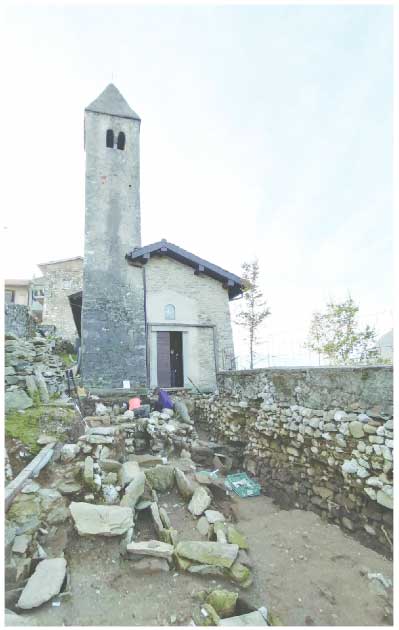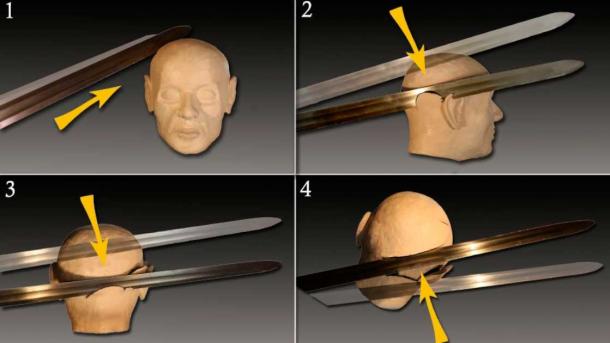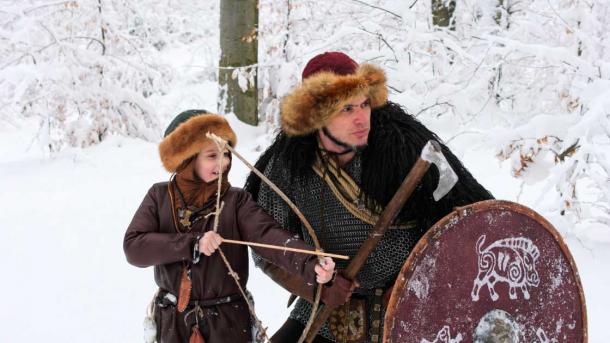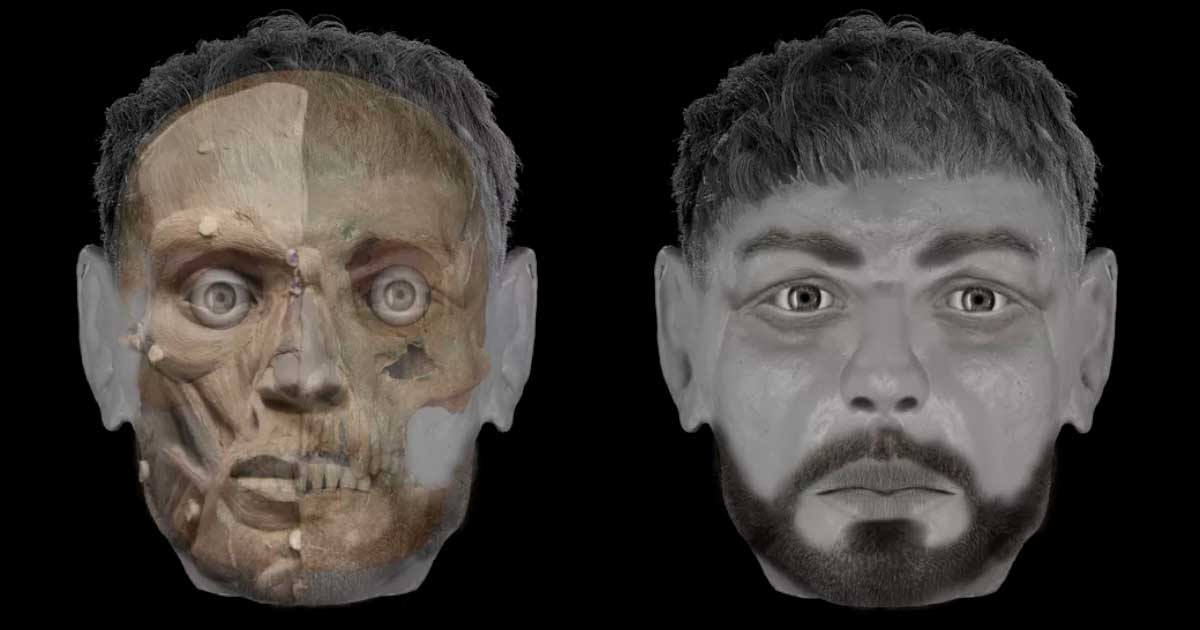Modern Forensic Science Helps Crack Details of 700-year-old “Cold Case” in Italy
In a “case of raw violence” in medieval Italy, four sword blows to the head killed a man, a team of scientists investigating the case 700 years later has determined.
Interestingly, the study published in the Journal of Archaeological Science has used modern forensic methods to arrive at this conclusion. Lead author Chiara Tesi, an anthropologist at the University of Insubria's Center for Osteoarchaeology and Paleopathology in Italy, told Live Science that it seems to have been a “case of overkill”, seeing the ferocity with which the wounds were inflicted.
Violent Murder Through Repeated Sword Blows to the Head
The victim suffered as many as four brutal sword blows to the head. “The individual was probably taken by surprise by the attacker” and was unable to properly protect his head, Tesi told Live Science in an email interaction.
The first blow fell from the front, but as the man turned, probably trying to escape, the murderer chased him and hit him repeatedly from behind. The deepest wounds were inflicted from the rear. The forensic techniques used by the scholars in their examination of the dead man’s remains included computed tomography, or three-dimensional X-ray scans, and precision digital microscopy of the skull injuries to aid facial reconstruction.
Archaeology Meets Forensics
The skeleton was excavated in 2006 at the Church of San Biagio in Cittiglio, a small town in Varese province of northern Italy. The older parts of the church date back to the eighth century AD. The victim’s remains, however, were found in an 11th-century atrium built near the entrance. Radiocarbon dating has established that he was interred there before 1260 AD.
- Muscular Ancient Murder Victim Had Perfectly Circular Hole Punched In His Chest
- Historic Cold Cases: Five Ancient Archaeological Murder Mysteries

The murder victim was interred in the Church of San Biagio in Cittiglio prior to 1260 AD, which is now the site of ongoing excavations. (Omar Larentis / CC BY 4.0)
The victim was a young man between 19 and 24 years of age. A 2008 study had thrown light on some of the murder victim’s skull injuries. The new study has found other injuries and has established their sequence.
According to Tesi, the victim initially appears to have dodged or blocked his assailant, although the first blow did land on the top of his head, causing a shallow injury. As the man turned around to flee, however, he was “then hit in rapid succession by two other strikes, one affecting the auricle [ear] region and the other the nuchal [back of the neck] region,” she said. “At the end, probably exhausted and face down, he was finally hit by a last blow to the back of the head that caused immediate death,” she added.
- Solved: The 4000-Year-Old Murder Mystery Of The Cova Foradada Skull
- Face of 19th Century American 'Vampire' Reconstructed

The latest study found the murder victim was probably killed by four sword blows to the head; the first caused a slight wound, but the others seem to have killed him as he was trying to escape the attack. (Stefano Ricci/University of Siena)
The “evident overkill” indicated that the assailant may have had a complex motive for the attack. The savagery and frenzy of the attack betrayed a determination to ensure that the assault ended in the death of the victim.
The Murder Weapon, the Deceased, and His Killer
The new study has found that all the wounds were caused by the same straight-bladed weapon that was likely a steel longsword that was in use at the time. Further, the wound positioning shows that they were all inflicted by the same person.
An attempt to discover the victim’s identity through examination of historical records ended in failure as “we didn’t find anything,” Tesi said. However, the prominent positioning of his tomb makes it likely that he belonged to the influential De Citillio family that had originally built the church.
An older, healed injury to his forehead suggested that the victim had probably been a combatant in some battle. His right shoulder blade had developed in a way that suggested that he was in the habit of using a bow and practicing archery from an early age. This was perhaps a sign that he often hunted for sport.

Forensics show the murder victim’s shoulder blade indicated he was adept at archery. At the time, many youths learned archery from a young age. (alex_marina / Adobe Stock)
The scientists also used facial reconstruction to examine how the blows from the sword affected the soft tissues of the victim’s head. “We tested wound formation by placing a blade on the reconstructed head and replicating the blows received by the subject,” Tesi told Live Science. It helped them gauge the severity of the wounds.
Caroline Wilkinson, director of the Face Lab at Liverpool John Moores University in the UK, said to Live Science about the study in which she was not involved, “It's really interesting — a good use of forensic techniques to look at trauma to the head, and how those wounds have been caused.”
Wilkinson and Tesi both highlighted that facial reconstruction helps people to relate to human remains rather than looking at them as mere specimens. “Seeing the face and eyes of a young man is definitely more emotional than simply looking at a skull,” Tesi said.
This study shows how history can benefit from multidisciplinary approaches. Archaeology, forensics, historical records, and reasoned conjecture all came together to rebuild the sequence of events of a 700-year-old murder case.
Top image: The facial reconstruction of the Cittiglio murder victim, who was killed sometime between the 11th and the 13th centuries. Source: Stefano Ricci/University of Siena
By Sahir Pandey
References
Metcalfe, T. 2023. Medieval murder victim was killed by multiple sword blows to the head in ‘case of raw violence’. Available at: https://www.livescience.com/medieval-sword-murder-victim-revealed-italy.
Tesi, C. et al. Wounded to death. Holistic, multimodal reconstruction of the dynamics in a case of multiple perimortem cranial injuries from a medieval site in northern Italy. Available at: https://www.sciencedirect.com/science/article/abs/pii/S2352409X22003066?via%3Dihub.




















Comments
Facial reconstruction, as they do from ancient skulls, cannot be trusted. There’s a clear pattern of notorious bias, particularly with Neanderthal. Only an unbiased scientific approach should be used. That is, match up the DNA of the specimen with the modern human population and use the closest match as best guess what the person actually looked like. Should be easy these days. Just a simple algorithm, after you confirm the DNA. But there should ALWAYS be multiple and double blind lab analysis to mitigate the bias.
Nobody gets paid to tell the truth.